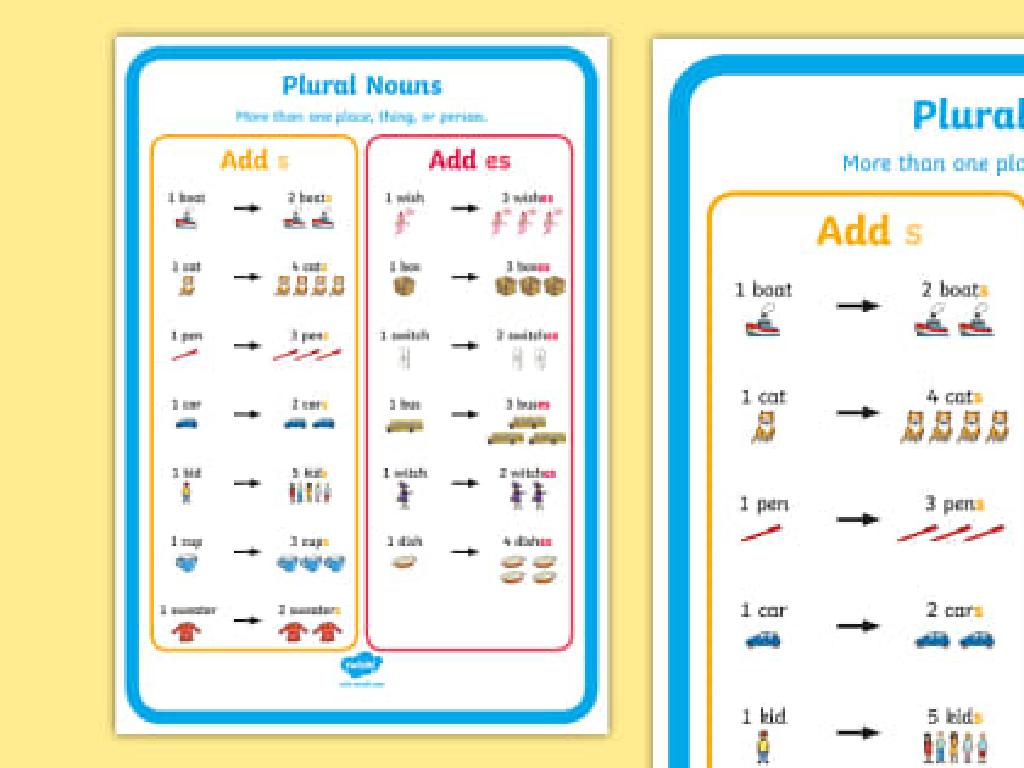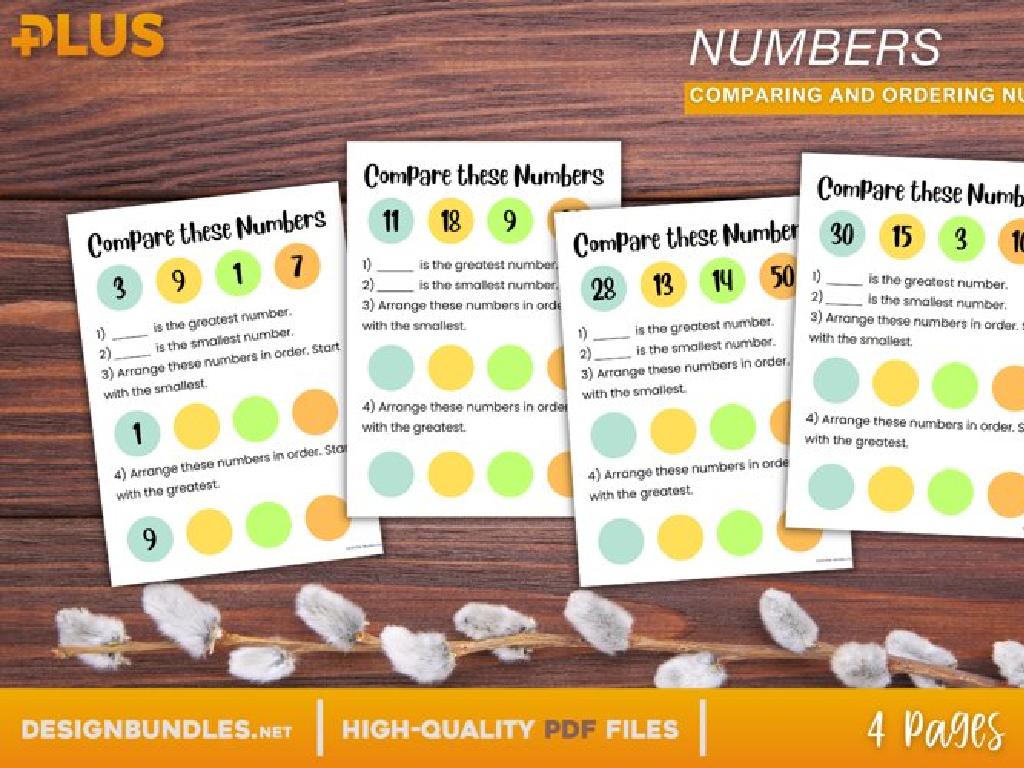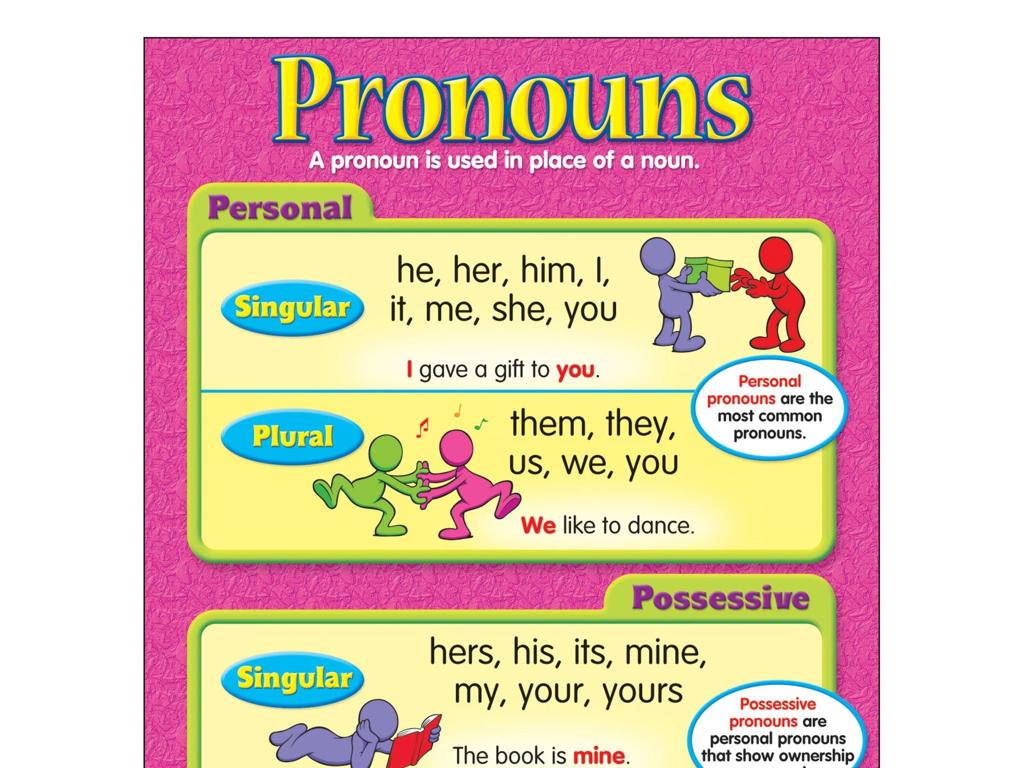Use Dictionary Entries
Subject: Language arts
Grade: Eighth grade
Topic: Reference Skills
Please LOG IN to download the presentation. Access is available to registered users only.
View More Content
Mastering Reference Skills: Dictionaries
– Importance of reference skills
– Reference skills are crucial for research and learning.
– Overview of reference sources
– Reference sources include dictionaries, thesauruses, encyclopedias, etc.
– Deep dive into dictionaries
– Dictionaries provide meanings, pronunciations, and usage of words.
– Utilizing dictionaries effectively
|
This slide introduces students to the concept of reference skills, emphasizing their importance in academic research and daily learning. Students will explore different types of reference sources, with a particular focus on dictionaries. Highlight how dictionaries are essential tools for understanding word meanings, correct pronunciation, and proper usage in context. Encourage students to familiarize themselves with both print and online dictionaries and demonstrate how to look up words effectively. Provide examples of how to use a dictionary entry to understand a word’s various definitions, its part of speech, and its etymology. This foundational knowledge will aid students in becoming more independent learners and effective communicators.
Exploring Dictionary Entries
– Definition of a dictionary
– A resource listing words with details like meanings and pronunciations.
– Components of dictionary entries
– Meanings, pronunciations, origins, and grammatical usage are included.
– Types of dictionaries
– General for everyday use, specialized for specific fields or subjects.
– Utilizing dictionaries effectively
– Learn to find and understand word information for better vocabulary skills.
|
This slide introduces students to the concept and uses of a dictionary. Begin by explaining what a dictionary is and its purpose as a reference tool for language. Highlight the key components of dictionary entries, such as meanings, pronunciations, etymologies (word origins), and syntax (how to use the word in a sentence). Discuss the difference between general and specialized dictionaries, and when each might be used. Emphasize the importance of knowing how to use a dictionary effectively to enhance vocabulary, improve reading comprehension, and aid in accurate writing. Encourage students to practice looking up words and to familiarize themselves with the layout and structure of dictionary entries.
Exploring Dictionary Entries
– Identify word and word class
– Find the part of speech next to the word
– Understand the pronunciation guide
– Phonetic symbols show how to say the word
– Explore definitions with examples
– Definitions clarify meaning; sentences show use
– Discover etymology and synonyms
– Etymology tells word history; synonyms give alternatives
|
This slide aims to familiarize students with the components of a dictionary entry. Start by explaining that each entry begins with the word itself, followed by its word class, which indicates the part of speech. The pronunciation guide, often in phonetic symbols, helps with correct word pronunciation. Definitions provide meanings, and example sentences show how the word is used in context. Etymology traces the origin and history of the word, while synonyms list words with similar meanings. Encourage students to use dictionaries to enhance their vocabulary, understand the nuances of language, and improve their reading and writing skills.
Navigating the Dictionary: Guide Words
– Guide words: Quick word location
– Guide words at the top of dictionary pages show the first and last words on a page.
– Dictionary words: Alphabetical order
– Words are listed in the order of the alphabet, from A to Z.
– Practice with guide words
– Find words in the dictionary using guide words as reference points.
– Understanding alphabetical sorting
– Learn how to sort words alphabetically and why it’s important.
|
This slide introduces students to the use of guide words and the concept of alphabetical order in a dictionary. Guide words are found at the top of dictionary pages and are used to help locate words more efficiently. Emphasize the importance of alphabetical order as a fundamental organizational tool in reference materials. Encourage students to practice finding words using guide words, which will enhance their reference skills. Provide examples and exercises for students to practice alphabetical sorting and using guide words to find specific words in the dictionary. This will prepare them for more efficient and effective use of dictionaries and other reference materials.
Mastering Pronunciation with Dictionary Keys
– Understanding pronunciation keys
– Pronunciation keys help decode how to say words
– Learn key symbols for correct pronunciation
– Symbols represent sounds; like /Y/ for ‘a’ in ‘about’
– Practice with challenging words
– Try pronouncing ‘facetious’, ‘epitome’, ‘synecdoche’
– Enhance reading fluency
|
This slide aims to familiarize students with the pronunciation keys found in dictionaries, which are essential tools for learning the correct pronunciation of words. Emphasize the importance of understanding these symbols as they directly relate to spoken English. Provide examples of symbols and the sounds they represent. Encourage students to practice with words that are typically challenging to pronounce, reinforcing the practical use of pronunciation keys. This exercise will not only improve their pronunciation but also their confidence in reading and speaking. As an activity, students can be asked to find additional words in the dictionary and share their pronunciation with the class.
Understanding Dictionary Definitions
– Words with multiple meanings
– e.g., ‘bat’ can mean a flying mammal or a baseball club
– Context dictates meaning
– Words in sentences have specific meanings
– Example sentences aid understanding
– ‘The bat flew at dusk’ vs. ‘He swung the bat at the ball’
– Practice with dictionary entries
|
This slide introduces students to the nuances of dictionary entries and how context affects word meaning. Emphasize that many words in English have multiple meanings, and the surrounding words in a sentence (the context) help determine which definition is appropriate. Provide clear examples to illustrate how the same word can change meaning based on its use. Encourage students to look up words in a dictionary and read all the definitions and example sentences to fully grasp the word’s usage. As an activity, students can choose words with multiple meanings and write sentences for each definition to reinforce their understanding.
Exploring Synonyms and Antonyms with Dictionaries
– Dictionaries: More than definitions
– Find words with similar or opposite meanings
– Synonyms expand vocabulary
– Use synonyms for richer language and to avoid repetition
– Antonyms clarify opposites
– Antonyms help understand the full meaning by contrast
– Practical uses in writing
|
This slide emphasizes the importance of using dictionaries not just for definitions, but also for finding synonyms and antonyms to enhance writing skills. Encourage students to explore the thesaurus section of dictionaries to discover synonyms that can enrich their vocabulary and make their writing more varied and interesting. Discuss how antonyms serve as a tool for understanding the full scope of a word’s meaning by considering its direct opposite. Provide examples and suggest that students use these strategies in their next writing assignment to demonstrate the practical application of these reference skills.
Etymology: Unveiling Word Histories
– Etymology: word history exploration
– Etymology studies the origin and historical development of words.
– Discovering word roots and origins
– Knowing roots helps decipher unfamiliar words.
– Etymology’s role in spelling
– Recognizing patterns in word origins can improve spelling skills.
– Etymology aids meaning comprehension
– Understanding a word’s history can enhance its meaning and usage.
|
This slide introduces students to the concept of etymology, the study of the history of words, their origins, and how their meanings have changed over time. By exploring etymology, students can gain insights into the development of the English language and improve their vocabulary. Understanding the roots of words can also aid in better spelling and comprehension, as many English words are derived from Latin, Greek, or other languages. Encourage students to look up the etymology of unfamiliar words they encounter to build a deeper understanding of their meanings and connections to other words.
Class Activity: Dictionary Scavenger Hunt
– Find words with guide words
– Pronounce words using key
– Use the dictionary’s pronunciation guide to say new words correctly
– Match words to definitions
– Create sentences with new words
– Use the words in original sentences to demonstrate understanding
|
This interactive class activity is designed to enhance students’ dictionary skills. Students will start by using guide words to locate specific entries in the dictionary. They will then practice pronouncing new words correctly by following the pronunciation key provided in the dictionary. Next, students will match the words they’ve found with their correct definitions to reinforce their understanding of the words’ meanings. Finally, they will create their own sentences using the words they’ve discovered to demonstrate their ability to use the new vocabulary in context. For the teacher: Prepare a list of words for students to find, ensure dictionaries are available for all students, and consider working in pairs or small groups to encourage collaboration.
Mastering Dictionary Skills: Recap & Homework
– Recap dictionary usage
– Significance of reference skills
– Reference skills are vital for effective communication and learning.
– Homework: 5 new words
– Find unfamiliar words, note their meanings.
– Incorporate words in sentences
– Create sentences using the new words to demonstrate understanding.
|
This slide aims to consolidate the students’ understanding of using a dictionary and emphasize the value of reference skills in daily life. Highlight the key steps in looking up words, understanding the different parts of a dictionary entry, and how these skills contribute to better vocabulary and comprehension. For homework, students are tasked to find five words they have not encountered before, write down their definitions, and construct sentences using each word. This exercise will help reinforce their learning and encourage them to apply their reference skills outside the classroom. Provide examples of how to choose words and craft sentences to guide them in their homework.






